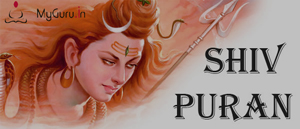
RITUALS OF THE WORSHIP OF SHIVA—SACRED PIGRIMAGES
On the request of the sages, Suta describes about the methods of worshipping Shivalinga. He says– “One should construct a Shivalinga either of mud, rock or metal and establish it in such a place where it can be worshipped daily without any hindrance.”
“The ‘Char’ (mobile) Linga should be small in size and the Sthira (fixed) linga should be large. The Linga should be constructed along with the pedestal. The rule for constructing a Shivalinga has been specifically described. The breadth of thickness of the Linga should be twelve times the thickness of the devotees (one who is constructing the linga) finger, while the length should be twenty-five times. After establishing the linga in the above mentioned way, it should be worshipped after performing the Shodasopachar. The thumb also symbolise a Shivalinga and its worship can be done. While worshipping the Shivalinga, the
mantra OM NAMAH SHIVAY should be continuously chanted. Chanting this mantra for five crore times, helps a man in attaining to the abode of Shiva. Worship of Shiva done during the mid night is considered to be especially fructifying.
There are numerous places of pilgrimages connected with Shiva at the banks of river Ganges and river Indus. River Saraswati is considered to be a sacrosanct river and having an opportunity of living at its banks, helps in attaining to the abode of Brahma. Similarly, there are famous temples of Lord Shiva at Kashi, Naimisharanya, Badrikasharama and Kedar etc.
There are many temples of Shiva at the banks of holy river like Ganges, Yamuna, Saraswati, Godavari, Narmada, Kaveri, Sarayu, Tungabhadra etc. Worshipping Shiva at these places bestows undiminishing virtues and liberates a man from all of his sins.